
Creating Optimal Laboratory Environments: How VEC’s Magnetic Field & Acoustic Modeling Services Support Precision Instruments
In today’s high-tech laboratories, the performance of electron microscopes, e-beam lithography tools, and other sensitive instruments depends on more than just the quality of the equipment itself. Environmental conditions, particularly magnetic fields and acoustic noise, are critical in ensuring optimal imaging resolution, measurement accuracy, and long-term instrument stability. At VEC, we specialize in identifying, modeling, and mitigating these environmental disturbances through advanced magnetic field and acoustic modeling services. This blog explores how these services work, why they matter, and how they can transform your laboratory into a high-performance environment for precision science and technology.
Why Environmental Control Is Critical for Precision Tools
- Transmission Electron Microscopy (TEM)
- Scanning Electron Microscopy (SEM)
- Scanning Probe Microscopy (SPM/AFM)
- E-beam lithography & metrology
- Photonics & laser interferometry
Magnetic Field Modeling & EMI Design
There are two types of magnetic fields that affect electron microscopy labs and other electron beam tools:
- AC Magnetic Fields – These are alternating fields, typically at 60 Hz, and are generated by electrical equipment.
- DC Magnetic Fields – These result from the movement of large, ferromagnetic objects, such as elevators, or from DC field emitters, such as MRI machines.
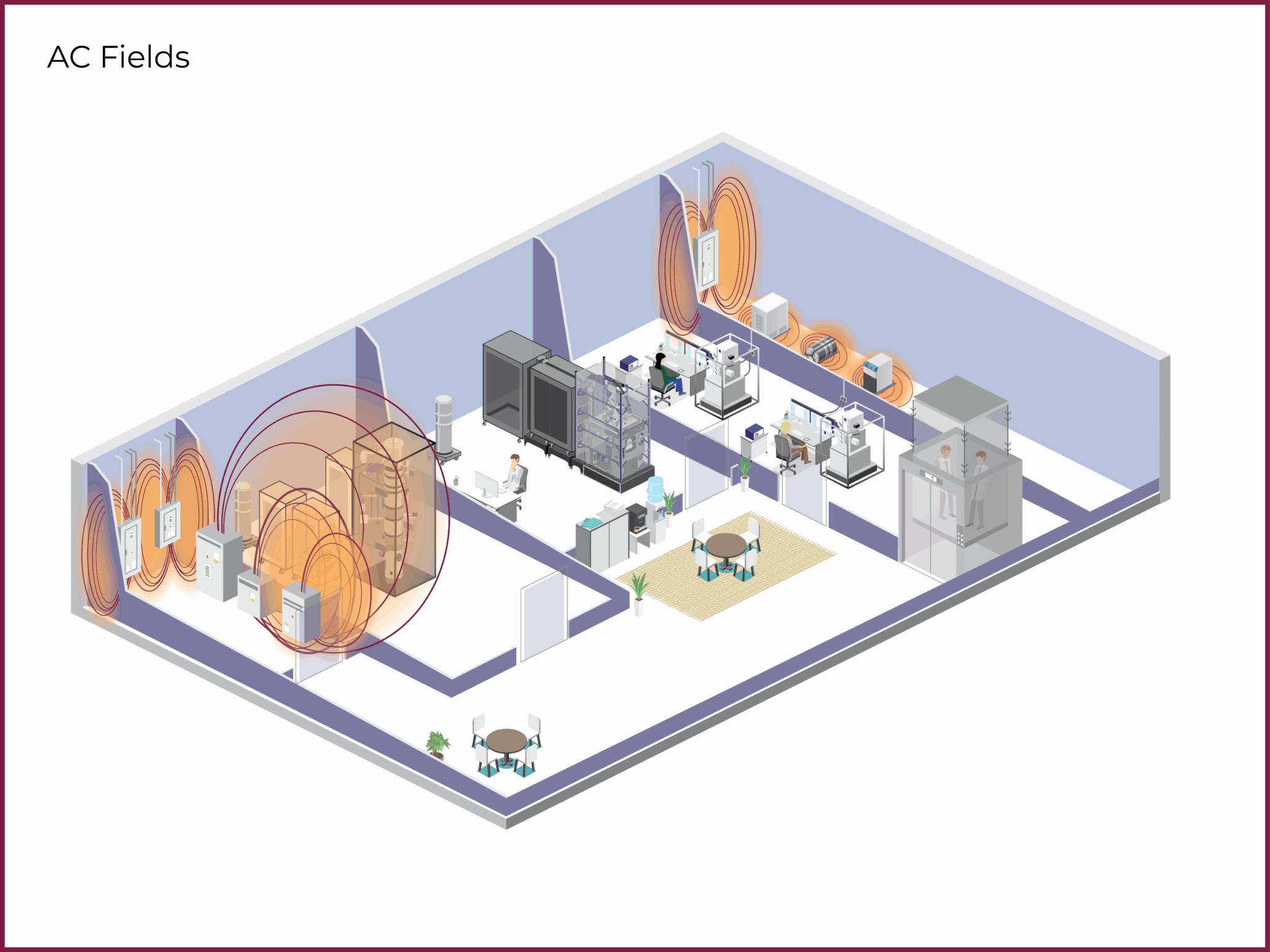
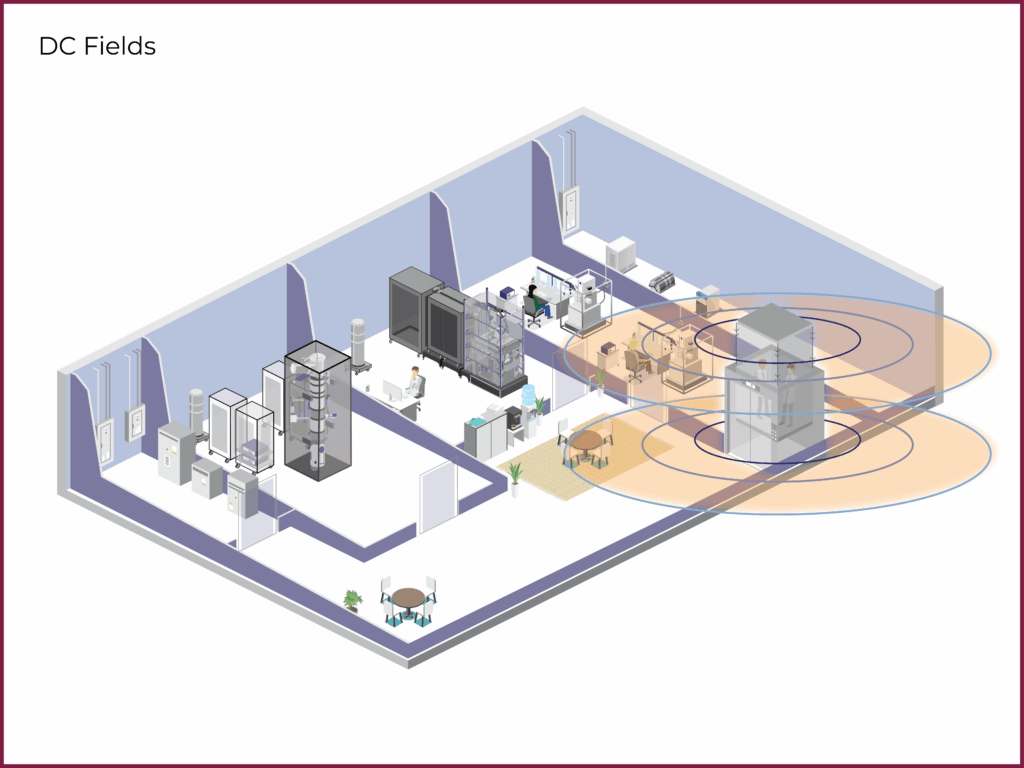
DC magnetic fields- Robust Database of Sources
Over the years, VEC has developed a detailed database of DC magnetic field sources that can impact electron beam tools. Using this data, we can predict how these fields attenuate distance from various sources. For example, we can identify how far away a freight elevator must be before its magnetic field changes fall below 0.5 milligauss peak-to-peak. This insight supports effective instrument placement and facility planning.
AC Magnetic Fields - High-Resolution Modeling
We use advanced 3D finite element modeling tools to simulate how magnetic fields behave within a space, incorporating known sources of EMI and infrastructure details such as conduit paths, cable trays, and electrical panels. Our models can resolve magnetic field variations at sub-meter scales, enabling pinpoint analysis of potential problem areas.
Our services include:
- Mapping field intensities in existing or proposed lab spaces
- Simulating field behavior under different source configurations
- Comparing shielded vs. unshielded conditions
- Evaluating mitigation strategies, including placement changes, shielding options, and active cancellation systems
Validated & Field-Tested
Every model is cross-referenced against actual field measurements using fluxgate magnetometers and other calibrated equipment. This hybrid of simulation and empirical testing ensures that our recommendations reflect real-world conditions and will be effective when implemented.
Active Magnetic Field Cancellation
In cases where shielding alone is insufficient, such as high-resolution TEM installations in electromagnetically noisy buildings, VEC recommends active magnetic field cancellation. Systems like the VEC Spicer SC24 or custom dual-axis cancellation arrays can reduce both AC and DC fields in real time, allowing instruments to operate within spec.
Acoustic Modeling for Laboratories
While many people associate acoustic noise with discomfort, in laboratory settings it can have technical consequences. Low-frequency HVAC hums, airborne compressor vibrations, and wall-transmitted mechanical noise can couple into sensitive equipment and cause subtle performance degradation.
HVAC Supply & Return Noise
Using proprietary software and validated acoustic standards, we can:
- Predict sound pressure levels (SPL) in occupied spaces
- Identify transmission paths through ductwork or structural members
- Recommend layout modifications, such as acoustic duct lining or remote equipment placement
- Specify silencers, dampers, or diffusers to reduce noise at the source
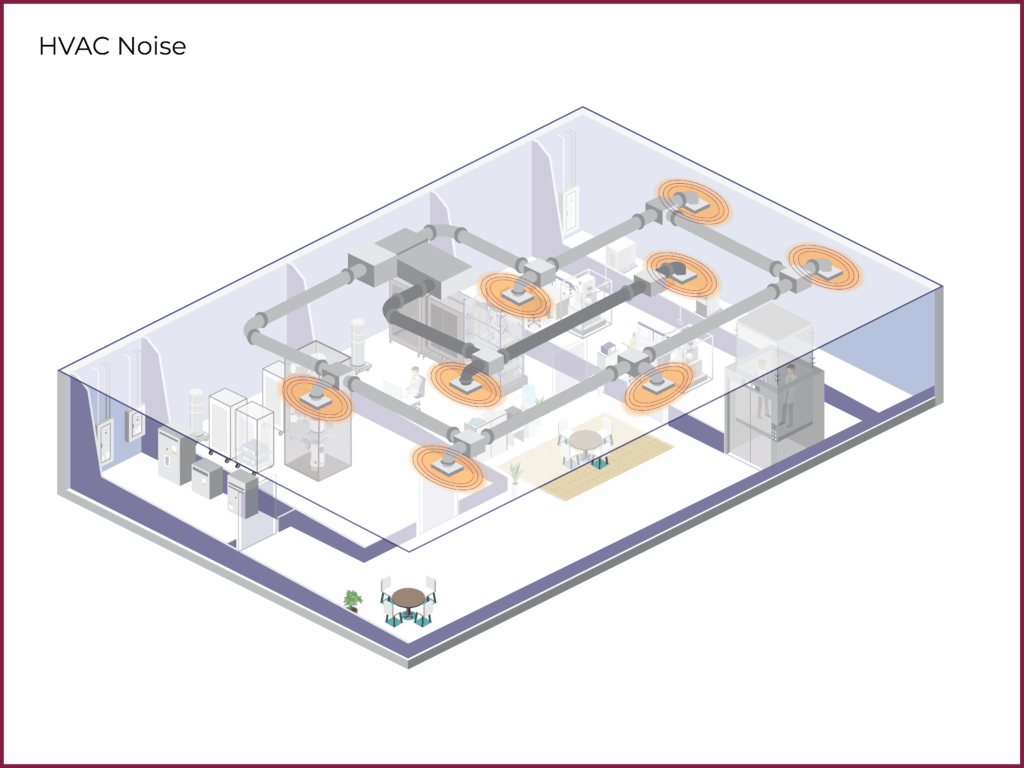
Structural Transmission & Reverberation
We also assess room acoustics using Sabine equations and reverberation time (RT60) calculations to reduce echo and improve clarity for both human users and sensitive instruments. Treatments may include:
- Acoustic wall panels
- Ceiling baffles and tiles
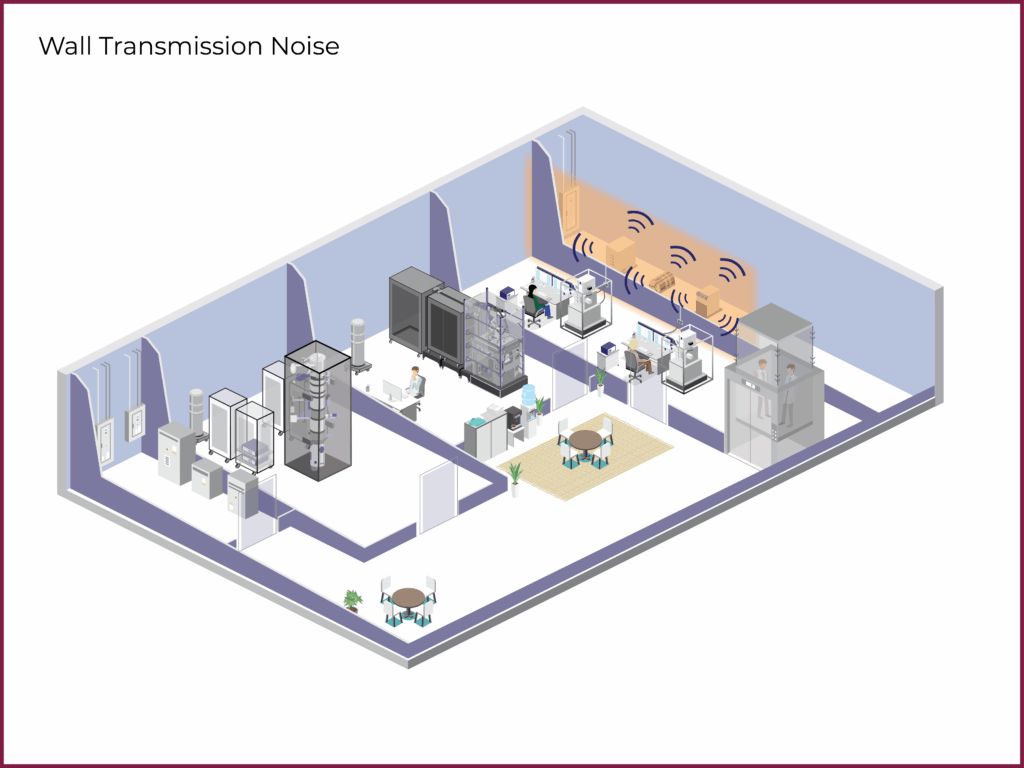
Ideal Project Types to Engage VEC
- Renovations of existing laboratory spaces: Adapting older buildings to meet modern environmental requirements for precision instruments
- New construction of research facilities or cleanrooms: Incorporating magnetic and acoustic modeling into the design process to avoid costly retrofits later
- Tenant improvement projects in high-tech commercial buildings: Ensuring EMI and acoustic compliance for build-outs involving imaging, inspection, or nanofabrication tools
- Tool relocation or laboratory repurposing: Reassessing environmental compatibility when equipment is moved within a building or reinstalled in a new location
Integrated Design & Turnkey Solutions
- Design documentation for architects and MEP engineers
- Product selection and supply for acoustic panels, magnetic shielding, or active cancellation
- Installation oversight and post-install validation testing
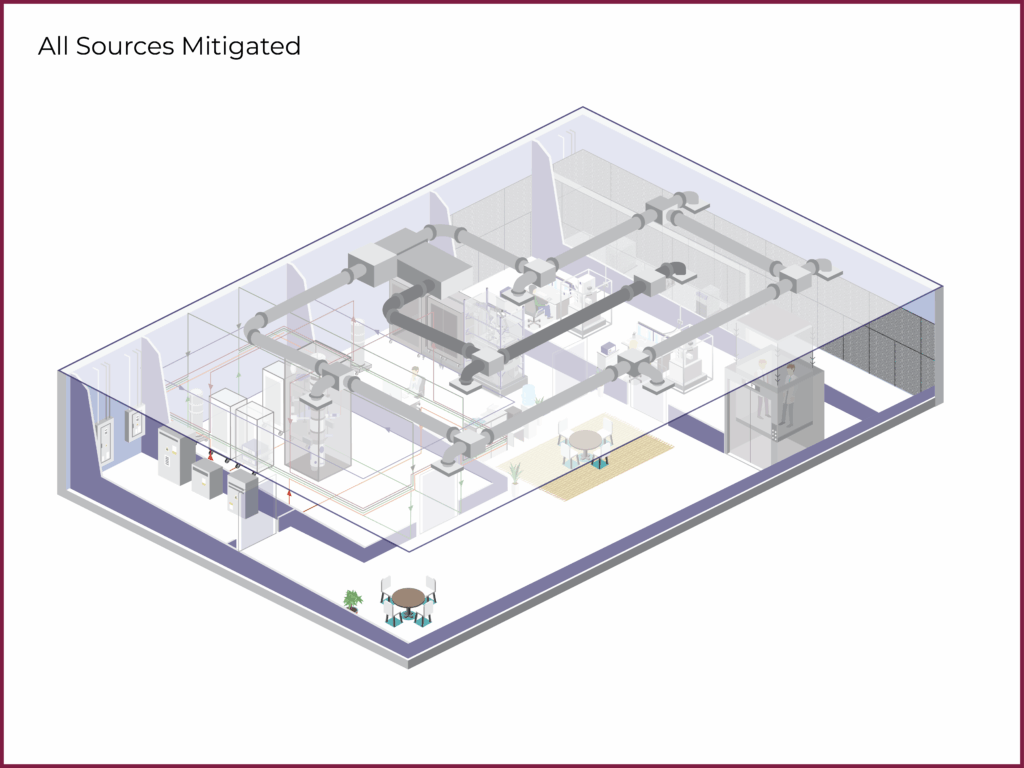
Why Choose VEC?
- Scientific accuracy backed by real-world data
- Custom solutions tailored to your instruments
- End-to-end service, from modeling to installation
Let VEC Help You Achieve Environmental Stability
To learn more or to request a site evaluation, visit our services pages:
Or contact us directly to schedule a consultation tailored to your facility.














